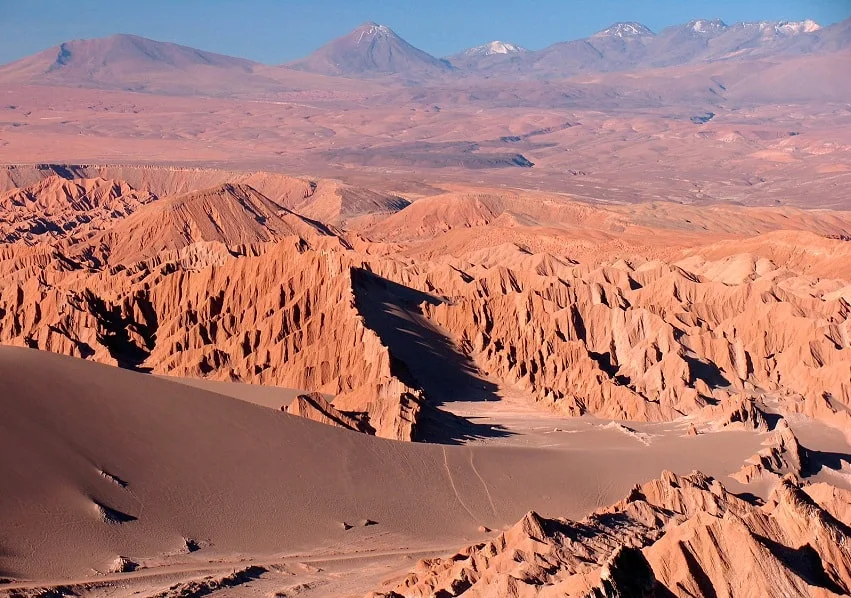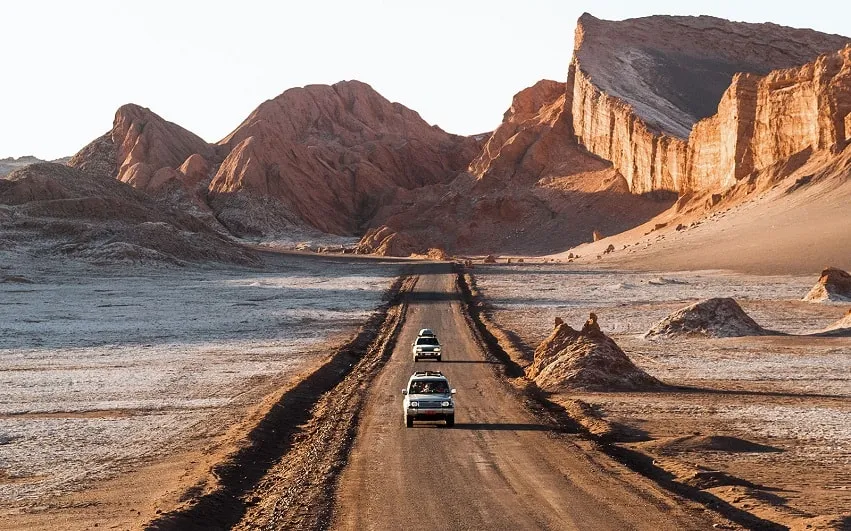 |
The Atacama Desert is known for its extremely rare rainfall: in some places it has not rained for several hundred years. The temperature here is quite moderate and there are often fogs, but because of its dryness, the flora and fauna are not rich. However, Chileans have learned to cope with the peculiarities of their desert, extract water and organize exciting tours of the sand mounds.
Main characteristics of the Atacama Desert
Many have heard what the Atacama is famous for, but they do not know in which hemisphere it is located and how it was formed. The driest place on Earth stretches from north to south in western South America and is sandwiched between the Pacific Ocean and the Andes. This territory of more than 105 thousand square kilometers belongs to Chile and borders on Peru, Bolivia and Argentina.
 |
| Atacama Desert |
Despite the fact that this is a desert, the climate here can hardly be called sultry. Day and night temperatures are moderate and vary with altitude. Moreover, Atacama can even be called a cold desert: in summer there is no more than 15 degrees Celsius, and in winter the temperature rises to an average of 20 degrees. Due to the low air humidity, glaciers do not form high in the mountains. The temperature difference at different times of the day causes frequent fogs, this phenomenon is more typical of winter.
 |
| Atacama Desert |
The Chilean desert is crossed by only one river Loa, the channel of which runs in the southern part. From the rest of the rivers, only traces remained, and then, according to scientists, there has been no water in them for more than a hundred thousand years. Now these areas are oasis islands, where flowering plants are still found.
Reasons for the formation of a desert area
The origin of the Atacama Desert is due to two main reasons related to its location. On the mainland, there is a long strip of the Andes, which prevent water from entering the western part of South America. Most of the sediments that form the Amazon Basin are trapped here. Only a small fraction of them sometimes reach the eastern part of the desert, but this is not enough to enrich the entire territory.
 |
| Atacama Desert |
The other side of the arid region is washed by the Pacific Ocean, from where, it would seem, moisture should get, but this does not happen because of the cold Peruvian current. In this area, a phenomenon such as temperature inversion operates: the air does not cool with increasing altitude, but becomes warmer. Thus, moisture does not evaporate, therefore, precipitation has nowhere to form, because even the winds are dry here. That is why the driest desert is devoid of water, because it is protected from moisture on both sides.
Flora and fauna in the Atacama
The lack of water makes this area uninhabitable, so there are few animals and relatively poor vegetation. However, cacti of different types are found almost everywhere in an arid place. Moreover, scientists count several dozen different species, including endemic ones, for example, representatives of the Copiapoa genus.
 |
| Atacama Desert |
More diverse vegetation is found in oases: here, along the beds of dried rivers, strips of small forests grow, consisting mainly of shrubs. They are called gallery and they are formed from acacias, cacti and mesquite trees. In the center of the desert, where it is especially dry, even the cacti are small, and you can also see dense lichens and even how the tillandsia bloomed.
 |
| Atacama Desert |
Whole colonies of birds are found close to the ocean, which nest on rocks and get food from the sea. Animals can be found here only close to human settlements, in particular, they also breed them. Very popular species in the Atacama Desert are alpacas and llamas, which can tolerate water scarcity.
Interesting facts about the Atacama Desert
The Atacama Desert is very amazing in nature, because due to its peculiarities it can present unusual surprises. So, due to the lack of moisture, corpses do not decompose here. Dead bodies literally dry up and turn into mummies. In the course of researching this area, scientists often find the burials of Indians, whose bodies shriveled thousands of years ago.
 |
| Atacama Desert |
In May 2010, a strange phenomenon for these places happened - the snow was falling with such force that huge snowdrifts appeared in the cities, making it difficult to move on the road. As a result, there were disruptions in the operation of power plants and the observatory. No one has ever seen such a phenomenon here, and it has not been possible to explain its reasons.
